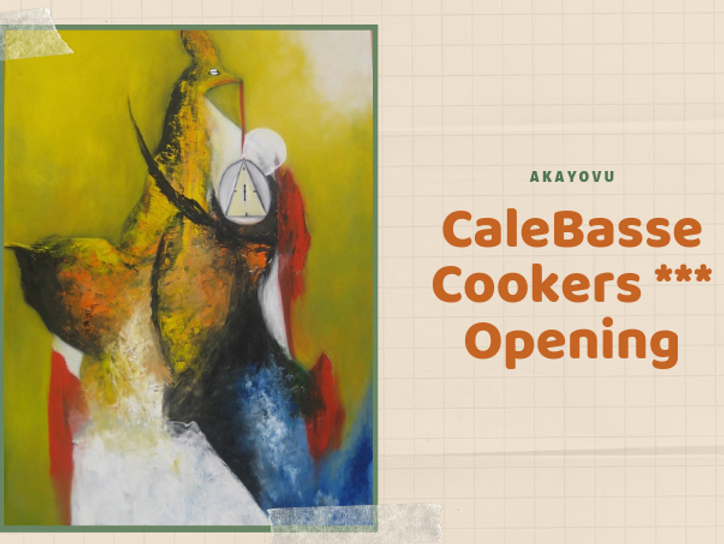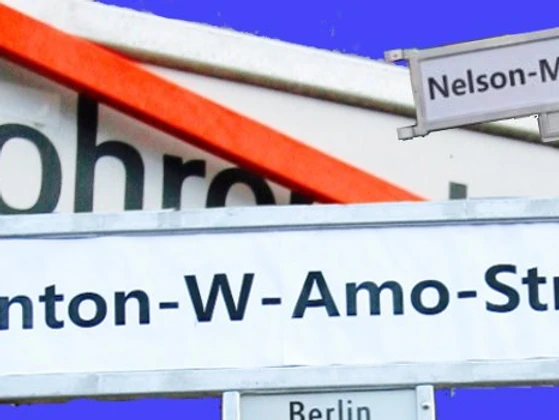Popular protests in Burkina Faso by Lila Chouli (pambazuka news)
Lila Chouli gives a behind-the-scenes view on protests in Burkina Faso. The spontaneous protests might prove that kicking a leader out might not need a formal organisation.
Political tensions have been rising in the tiny West African nation of Burkina Faso following the death in police custody of student Justin Zongo on 20 February, which sparked widespread student anger. Authorities initially said the death was due to meningitis, a lie that only amplified the protests, which quickly spread from Zongo’s native town of Koudougou in west-central Burkina Faso to the entire country. Are these protests a mere imitation of developments in north Africa?
Burkina Faso has a vibrant civil society that has managed to resist attempts by successive regimes in the post-colonial period to be co-opted into the single party system or the system of trade union representation that continues to dog the country.
Events in Tunisia, Egypt and Libya certainly have encouraged mobilisation in Burkina Faso, where people also want the current regime ‘out’. From slogans such as ‘Tunisia is in Koudougou’ and ‘Burkina will have its Egypt’[1] to caricatures on Facebook, there are echoes of the Arab spring in the country and some youth groups in Koudougou have even compared Justin Zongo to Mohamed Bouaziz[2]. In contrast to Ben Ali’s Tunisia and Mubarak’s Egypt, Burkina Faso has always had a certain degree of freedom of information and expression and the right to organise. It is easier for young people from underprivileged classes to meet and plan their actions in person[3] rather than on the net[4].
Yet the impact of developments in Egypt and Tunisia can be felt. During a demonstration in front of the regional council in Ouahigouya, an official driver who refused to obey the orders of the demonstrators was forced to flee. Another person who couldn’t force his way through, ‘slammed his brakes, got out of the car, fists up, made a V for victory sign to the applause of those around’.[5]
Echoes of North Africa can also be seen in the relations with the police. Police brutality in the country make police stations a favourite target during demonstrations, yet in Leo some members of the armed forces reportedly apologised to demonstrators, assuring them they understood their desire for justice. ‘This immediately brought down tensions, demonstrators agreed to move on shouting bravos to the soldiers for their solidarity and compassion.’[6]
This relationship between demonstrators and the police – which wasn’t reported from all areas – was even described as a kind of ‘pact of non aggression towards the police’[8] by the press, which saw the demonstrators as ‘insurgents grouped like a swarm of bees who advanced in front of the police brigade, fists raised, as if they had signed a pact of non-aggression, before taking on the tax authorities.’
Essentially, the resemblance to the uprisings in the north lies in structural similarities – an unequal society, high unemployment, the lack of future perspectives, police violence, impunity, a closed political system, a bourgeoisie tied in with a non-functioning political administration and the longevity of the regime.
The authorities also seem to have learnt something from the events in North Africa. The government did its utmost to calm people down after the violence between 22 and 24 February. On 28 February, the government’s press service announced that the governor and the regional police chief of the west-central area had been sacked.
But the response of two student unions (ANEC Koudougoud and UGEB) to the announcement that police officers guilty of misconduct would be arrested, while continuing to reiterate that Zongo had died of meningitis, was: ‘You announce the arrest of policemen involved without clarifying the circumstances of his death. Who amongst the guilty have been arrested?’[9] The regime ordered security forces to barracks. Investigations were launched, one on the events in Koudougou, the other on what happened in Kindi and a third to focus on Poa.
Nonetheless, the events in Burkina Faso also have a domestic momentum. They have their roots in local conditions. Indeed, since the end of the so-called revolutionary period after the coup d ‘etat on 15 October 1987, which took the life of Thomas Sankara, there have been several face-offs with the regime of Blaise Campaore, some after violence in schools. In May 1990, medical student and ANEB activist Dabo Boukary was tortured to death at the base of the presidential guard. For years, the authorities maintained he escaped; it was only during the big university strike in 1997 that they hinted that he was in fact dead. On 9 May 1995, Garango students marched in support of their teachers fighting for better working and living conditions. Two students, Emile Zigani and Blaise Sidiani were killed. On 6 December 2000, Flavien Nebie, 12, was shot in the head during a march protesting the invalidation of the academic year by the University of Ouagadougou. The fact that the case dragged on for so long and passed from magistrate to magistrate shows the lack of seriousness in dealing with the death. Till today, Flavien Nebie’s death has not been clarified. The verdicts handed down to the two policemen who assassinated Emile Zigani and Blaise Sidiani eight years later speak volumes – one was given a 12 month suspended sentence while the other was simply let off.
The subservience of justice to political power is evident in these cases, as it was in that of Thomas Sankara and Oumarou Clement Ouedrago[10] and explains partially why far from decreasing, demonstrations are on the increase.
The press was not exempt from such attacks. Norbert Zongo, the director of the weekly ‘The Independent’ and three of his companions were assassinated on 13 December 1998. Zongo was investigating the death of David Ouedraogo, the chauffeur of Francis Campaore, the president’s brother.[11] This event marked a turning point in the mobilisation against impunity.
Unprepared for the scale of public protest which had spread throughout the country and involved all sectors of society, the regime began to waver and the country saw one of its most serious crises since the revolution. Thousands of people came out in the streets of Ougadougou and the provinces when news came that Norbert Zongo had died in a car ‘accident’. People attacked symbols of state, including the headquarters of the presidential party, the Congress for Democracy and Progress (CDP). More than 20,000 people turned out for the funeral of the slain journalist on 16 December and public emotions ran high for several months after his death.
The authorities didn’t take long to clamp down on the protests, even if it paid lip service to a negotiated solution, and there were arrests, militias were set up, sanctions were taken against strikers and schools were shut down. Eight years later, all charges were dismissed in the Zongo affair.
The current situation in Burkina Faso, insofar as it is a spontaneous, popular and inclusive movement (school and university students, the informal sector and traders) is strongly reminiscent of that period, but the goals seem to be larger, at least for some demonstrators who want the movement to go much further.
On the other hand, the violent aspect of current protests is not new in Burkina Faso. In 1998, there was the ‘enough is enough’ campaign, and in 2008 riots erupted to protest the rising cost of living. But never has the country seen this kind of rage vented against police stations (burnt down in Reo, Yako, Koupela, Poutenga, Gourcy, Ouahigouya, Dory, Leo). Equally unprecedented has been the storming of prisons by demonstrators in Yako, Ouagadougou and Koupela and the freeing of prisoners.
Not all public symbols were targeted – the anger was reserved for police stations, town halls, and the offices of governors; in short structures symbolic of the repression and lies unleashed during the repression in Koudougou. These were symbols of state – the police as forces of repression, the mayors who rule like potentates in their areas, the governors as representatives of the president. In fact, the governor of the centre-west area told protestors who wanted to meet him that he was there not because of the ‘people’s will but by the grace of the president of the country who nominated him as his representative in Koudougou.’[12]
The bloody repression of the protests in Koudougou and the entire province of Boulkiemde was followed by attempts at appeasement, which suggests that the authorities are seriously worried about the spread of popular discontent.[13] Public anger is already high, first because Blaise Compaore wants to modify the constitution to allow him to stay on as president for life.[14] Meanwhile, negotiations with the Coordination of the National Coalition against the high cost of living (CCVC), which ended in February, have not been endorsed while at the same time prices continue to spiral, a situation not unlike that of 2008. At the same time, the mayor of Ouagadougou, Simon Compaore (no relation to the president) has announced that 31 March is the final date of payment of the local development tax[15] which sparked enormous resentment when it was introduced in 2008. Like in 1998, social and economic rights have combined with the issues of truth, justice and impunity.
The peace overtures by the regime were also timed to coincide with the pan-African film festival (FESPACO) – a major cultural event in the country – which took place from 26 February to 5 March. The Burkinabe government is extremely attentive to its image abroad, which is why during the big student strike in 1997, classes were suspended in all schools in the capital to ‘allow students to benefit from the film festival’, notes the L’observateur Paalga.[16] But at the same time the newspaper wondered whether the measure wasn’t a strategy to prevent school students from linking up with university students who had been on strike for the previous five days. Moreover, government agents had infiltrated the protestors on campus. Classes were suspended throughout the country from 25 to 28 February when the suspension was extended until further notice. Classes were finally due to begin on 7 March (which didn’t happen because of demonstrations). It is worthwhile noting that the African Directors and Producers Guild issued a communiqué on 3 March calling on the international media to devote similar amounts of airtime to uprisings in other parts of the continent as they had to those in North Africa. It said it was the media’s responsibility to report on the aspirations of people wherever they might be.
The regime quickly returned to its authoritarian and military reflexes when demonstrations spread throughout the country and a turning point came on 11 March, the day the student union ANEB had called for a mass demonstration. The capital was completely sealed off by the army, the police and the gendarmes, who put down the protests. It was only that evening that Blaise Compaore deigned to address the nation for the first time since the unrest began. But he only talked about the material damage caused to public and private property.
The regime has stuck to the same tactics it has used since 1997 to deal with the latest crisis, alternating carrot and stick while denouncing the fact that its concessions have failed to reduce tensions. This is the model of the way they dealt with the student unrest – protests, repression, arrests, legal measures, discrediting the movement (subversion), negotiations and calls for mediation. The authorities have always called for a mediator during every student uprising – in 1990 it was the Burkinabe Movement for Human and Peoples’ rights; in 1997 and 2000, it was the Mediateur du Faso; in 2008, it was the national Parliament itself, often in conjunction with spiritual leaders (traditional and religious). This time too, they have set up a six-member ‘committee for initiatives’ headed by the Bishop of Ouagadougou. The justification for discrediting the movement this time was that the students were being manipulated by the UNDD on behalf of an external power, in this case, the Ivorian Laurent Gbagbo. It is extremely unlikely that Hermann Yameogo has much influence with a youth movement that is prepared to put the lives of members on the line in the fight against impunity. This opposition politician, who has sometimes served as a state minister in the Compaore government, is a prime example of political opportunism and how some dissidents alternate between the ruling party and the opposition. But the accusation against him is strange, since normally unrest is blamed on the Volta Revolutionary Communist Party (underground) which was set up in 1978 and is accused of having links with the ANEB, thus justifying the repression.
It wouldn’t be surprising if the regime didn’t point fingers at the communist party this time. The fact that they shut down all national universities and social welfare organisations on 14 March indicates that the government is trying to restrict the unrest to a problem in the education sector. It is equally obvious that this decision, coupled with the frustration that has been rising since 20 February, could lead to more violence during demonstrations which would in turn allow the state to initiate ‘legal proceedings’. This is another constant – arrests take place after each protest, the judiciary enters the game and the students are forced to find ways of supporting their comrades instead of keeping up the pressure.
However, the latest protests are not necessarily part of an organised structure (trade unions, political parties, associations). And when one reads the various commentaries on the failure of the struggle in the wake of the Norbert Zongo affair and on developments in North Africa, one gets the feeling that the youth this time (and the less young who also came out spontaneously) is convinced that a formal organisation isn’t necessary to kick a leader out.
BROUGHT TO YOU BY PAMBAZUKA NEWS
* Translated from the French by Sputnik Kilambi.
* Please send comments to gro.akuzabmap@rotide or comment online at Pambazuka News.
NOTES
[1] L’Observateur Paalga, n° 7826 du 23 February 2011, Koudougou – Disturbances after the death of a student.
[2] San Finna, n° 605 du 28 February – 5 March 2011, Violent demonstrations in Koudougou. Police misconduct, bad communication, unfounded accusations et several dead!. A reminder that Justin Zongo was taken to the police station on December 2011, the day Mohamed Bouazizi set himself on fire.
[3] After the 8 March demonstration was cancelled, it seems that there was more use of Facebook, it now helps in access to information and analyses of events and is really useful, also for the diaspora and foreigners who wish to understand what is happening.
[4] However, and this seems new, though we cannot confirm it, messaging services were cut off on the eve of the march called by ANEB on 11 March. L’Observateur Paalga, n°7838, March 14 mars 2011.
[5] Le Pays, n°4812, February 25 – 27 2011, Demonstrations spread to Ouahigouya.
[6] L’Observateur Paalga, n°7831, March 2, 2011, School kids demonstrate in Leo.
[7] L’Observateur Paalga, n°7836, March 10, 2011, Students demonstrate in Ouahigouya. Tensions at boiling point.
[8] L’Observateur Paalga referred to 9 dead on March 16 (n°7840, March 16, 2011, Situation nationale. Manifestation violente d’une crise de confiance).
[9] Letter from Aneb Koudougou to the Governor, 28 February 2011.
[10] He was a key political figure and was present from the start of the ’Revolution’ alongside Blaise Compaoré et Thomas Sankara. After the coup on 15 October 1987, he backed the new head of state. He was killed in a terrorist attack in a high security zone in the city centre on 9 December 1991.
[11] Wrongly accused of stealing a large amount of money, he was taken in by the presidential guard and died in the presidential infirmary. The chief doctor noted in the death certificate: ‘died of his illness on January 18, 1998 at 6.50’.
[12] His remarks were reported thus in San Finna, n° 605, 28 February – 5 March 2011, see note [2].
[13] Koudougou is known as a rebel town. It appears that a special police contingent (CRS) was deployed there last December to subdue the population. Cf. Eveil éducation, n° 173, March 7, 2011, Events in Koudougou.
[14] The article which restricts the presidential mandate to two consecutive terms was first modified on 27 January 1997, and was brought back after the protests in the Norbert Zongo affair. The law isn’t retroactive, and Blaise Compaore has since stood twice for re-election. He won another mandate last November with 80 per cent of the vote, though only 1.5 million people actually voted, but this is supposed to be his last.
[15] The tax on the owners of two and four wheelers is supposed to fund local development.
[16] L’Observateur Paalga, 24 February 1997, University crisis: latest developments.






